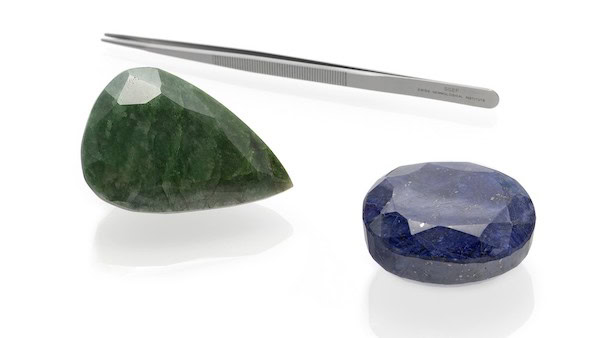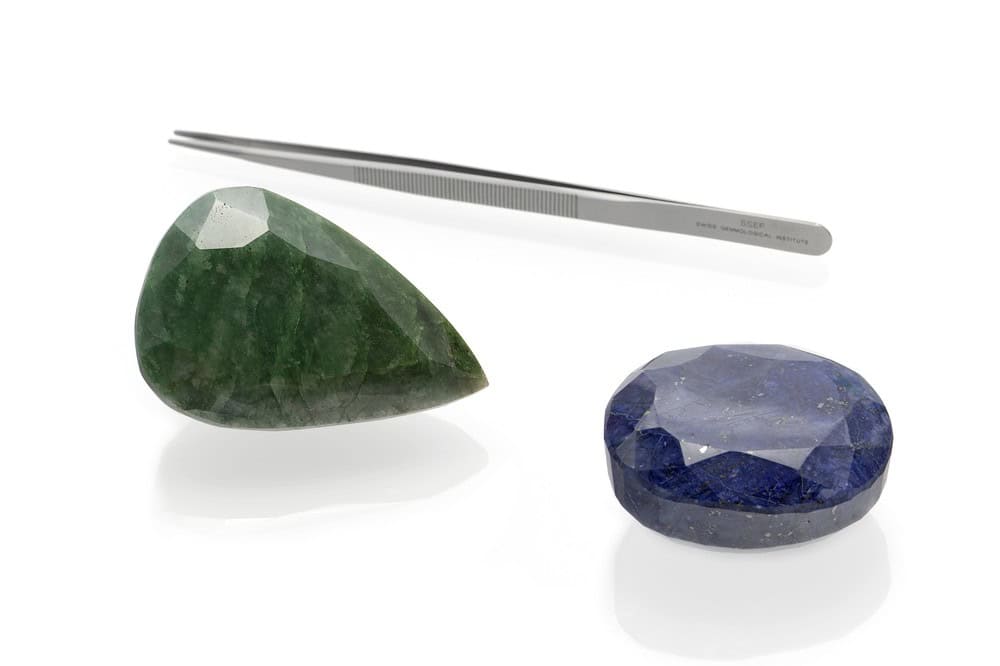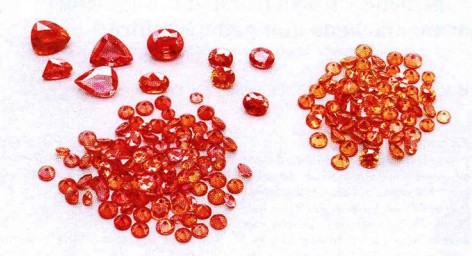
Too good to be true: SSEF measures against fraudulent gem scams
First published in Facette 29 (May 2024)

From time to time, the SSEF receives so-called ‘gems’ of very low quality for testing with the request for a SSEF Gemstone Report. Many of these materials are heavily fractured minerals or even rocks, which on top are treated or worked to give them a ‘gemmy’ appearance, at least to the credulous and naïve treasure hunter. Examples of such material are so-called ‘gigantic pearls’, which in fact regularly turn out to be shell pieces from the giant Tridacna clam, cut and polished to resemble a natural pearl (see Facette 2017, page 21), reconstructed artefacts made of lead glass fused with corundum fragments, or heavily fractured stones impregnated with a colour dye pretending to be a colourful stone.

We were thus quite prepared for the worst, when a new client called us to announce that they would like to have a pair of gemstones examined and tested at SSEF, each of them above 700 ct (Figure 1). After submission, a quick visual check clearly established that these two stones were in fact heavily treated with all fissures filled with either a green or blue dye, trying to mimic emerald and sapphire (Figure 2). As is obvious from the microphotos, both stones were initially rather greyish opaque and not at all of gem-quality. Raman spectroscopy revealed their true mineralogical composition, being an aggregate of predominantly beryl for the green stone and predominantly cordierite for the blue stone.
As is well-known from numerous cases over the past few decades, such material is commonly used as part of financial fraud schemes. As such, the Swiss Gemmological Institute SSEF decided already about two decades ago that no written report is made for any stone/material that does not fit our internal criteria for gem quality material. This also includes all rough stones. This is a protective measure against scams as the mere existence of a lab report from a reputed laboratory such as SSEF may be misused to fraudulently inflate the ‘value’ of such ‘world- record’ stones to grotesque levels. Recent examples can be easily found in newspapers and the media.
To summarize, the above pair of treated stones were returned to the client with a verbal explanation of their treatment status and consequently low quality, but no written document was issued by SSEF. The only exception for which SSEF would issue a written test report is if such an item is part of a court case and requires proper gemmological characterization.

